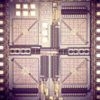-
Posts
8 -
Joined
-
Last visited
Content Type
Profiles
Forums
Events
Everything posted by spur
-
but datasheet of 1N4148(fairchild) shows that with 30mA forward current , forward bias will be 0.8V. so the negative supply will be 1.6. I think 1.5V is reasonable. ::) BTW, can I use my 30V 5A transformer with MC34071 or TLE2141? in your part-list the transformer is characterized 28V 4.3A !!?
-
but my transformer is 30V 5A (although I'm not sure about 5A), can I use these opamps with this transformer? the load current ( if you mean negative supply pin of U3 ) is very low, that is correct, but C3 is continuously discharging through R3 (220ohm) . with 10V across C3 the discharging current will be 39mA. simulation results for current of R3
-
ooo! i haven't thought of that. I think I have to build the circuit and test the resistor values in real circuit. I'm having trouble finding OPA445, a friend of mine is going to buy them for me, but he will not come to me until two or three weeks later, so I have to wait :'( thank you for your answers. I really enjoy reading your posts in this forum.
-
Hi what happens if I remove R1? what if I increase the value of R2 to say 560 ohm? (in that case I can use a 1/4 watt or 1/2 watt resistor.) I simulated the circuit, the lower waveform is -1.3V line, the upper waveform is the voltage across C2. the black waveform is for R2=82ohm and the red waveform is for R2=400ohm. you can see that increasing R2 affects charging voltage of C2 (I think that's because time constant of RC circuit rises and in a short time, C2 cannot charge to its MAX voltage, am I correct?). can anyone explain to me why discharging voltage level of C2 is independent of R2 ? discharging current of C2 is also goes through R2, so why is that the final value of the voltage across C2 is the same with both small and large value of R2? thanks.
-
thanks audioguru :) OK! here is my problem 0.7mA * 1Kohm = 0.7V , R16 shunts the base-emitter junction of Q4, so there is 0.7V across base-emitter, so the transistor turns on. ??? am i wrong? i did a few searches over the internet and found out that Icer (a resistor between base and emitter - just like this) is more useful in understanding the real performance of a transistor, but i don't understand why we tend to define something like Icer (instead of Iceo) and why it is more useful?? and I couldn't find any good article or webpage to describe the concept of Icer.
-
Hi, what is the role of R16 ? ;D ;D I know that it has been asked by some people before, and here is the answers: OK! but i can't get it clearly ::) ??? :-\ how does it bypass the leakage current? does the leakage current passing through Q4 causes the Q4 to turn off? does flowing the leakage current into C7 rises the output voltage? can anyone clearly show (or characterize) this leakage current? ... and questions like that ;) ::) I'll appreciate it if anyone take the time to answer my questions. and ... it is obvious that my English is not good :-[ . apologies.


